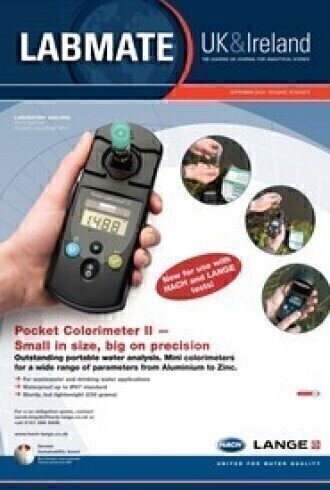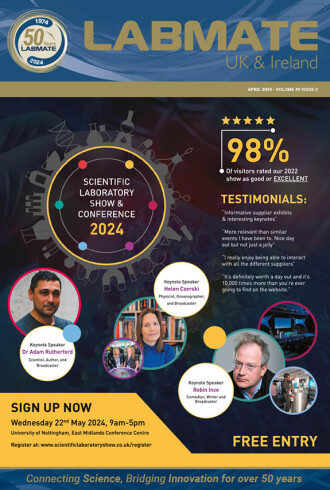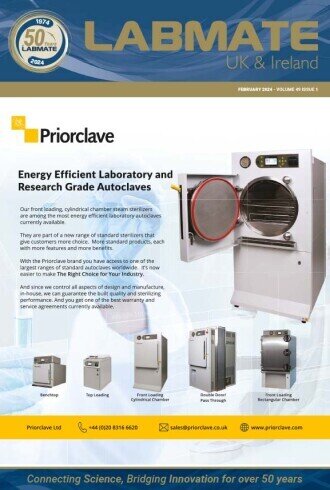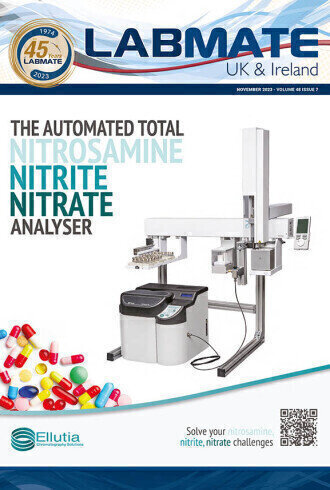Labmate UK & Ireland
Diagnostic Ultrasonics on the Nanoscale
Scientists and Engineers at The University of Nottingham have built ultrasonic transducers capable of generating and detecting ultrasound that are orders of magnitude smaller than current systems — so tiny that up to 500 of the smallest ones could be placed across the width of one human hair. While at an early stage these devices offer a myriad of possibilities for imaging and measuring – such as potential to be placed inside cells to perform intracellular ultrasonics. Able to produce ultrasound of such a high frequency that its wavelength is smaller than that of visible light, theoretically they make it possible for ultrasonic images to take finer pictures than the most powerful optical microscopes.
The work, by the Applied Optics Group in the Division of Electrical Systems and Optics, has been deemed so potentially innovative that last year it was awarded a £850,000 five year Platform Grant by the Engineering and Physical Sciences Research Council (EPSRC) to develop advanced ultrasonic techniques. The team has also been supported by additional funding of £350,000 from an EPSRC grant to underpin aerospace research.
Matt Clark, of the Applied Optics Group, said: “With the rise of nanotechnology you need more powerful diagnostic tools, especially ones that can operate non-destructively and ones which can be used to access the mechanical and chemical properties of the samples at this scale. These new transducers are hugely exciting and bring the power of ultrasonics to the nanoscale.”
The transducers sandwich or shell like structures possess both optical and ultrasonic resonances; a pulse of laser light will set these ringing at high frequency which launches ultrasonic waves into the sample. When they are excited by ultrasound the transducers are very slightly deformed and this changes their optical resonances which are detected by a laser. As ultrasonics is used in medical imaging, engineering applications and for chemical sensing, these tiny transducers open up the possibility of using these techniques not only inside cells but also on nanoengineered components.
Dr Clark said: “Imagine imaging inside cells in the same way that ultrasonic imaging is performed inside bodies. Theoretically we could get higher resolution with the nano-ultrasonics than you can with optical microscopes and the contrast would be very interesting. In addition the transducers can be made into highly sensitive chemical sensors; this would allow you to distribute chemical sensors in tissue or in paint — so you could make paint with chemical sensors to detect corrosion or explosives in it.” The research was performed between the Division of Electrical Systems and Optics in the Faculty of Engineering and the School of Pharmacy.
Technical Articles
- Rapid Evaporation Solutions for Natural Product Extraction Processes
- Know Your H2O
WWEM Preview
- Show Preview
Spotlight Features
- Particle Characterisation
- Environmental Analysis & Electrochemistry
Other Features
- Research and Events news
- News & Views
- Market Place
- New Literature & Products
Previous Digital Editions
Digital Edition
Lab Asia 31.2 April 2024
April 2024
In This Edition Chromatography Articles - Approaches to troubleshooting an SPE method for the analysis of oligonucleotides (pt i) - High-precision liquid flow processes demand full fluidic c...
View all digital editions
Events
Apr 22 2024 Marrakech, Morroco
Making Pharmaceuticals Exhibition & Conference
Apr 23 2024 Coventry, UK
Apr 23 2024 Kintex, South Korea
Apr 23 2024 Seoul, South Korea
Apr 24 2024 Jakarta, Indonesia





.jpg)













